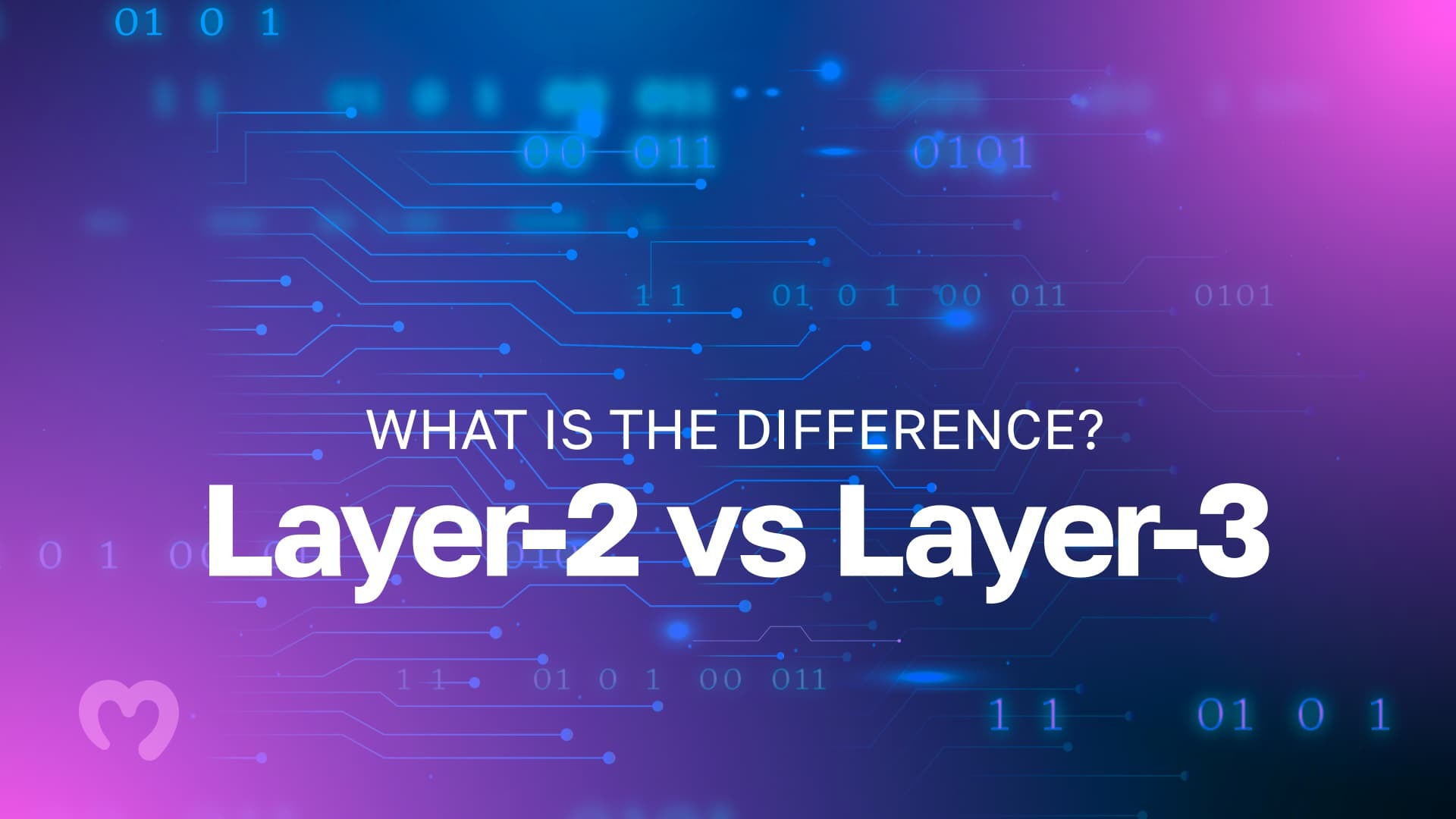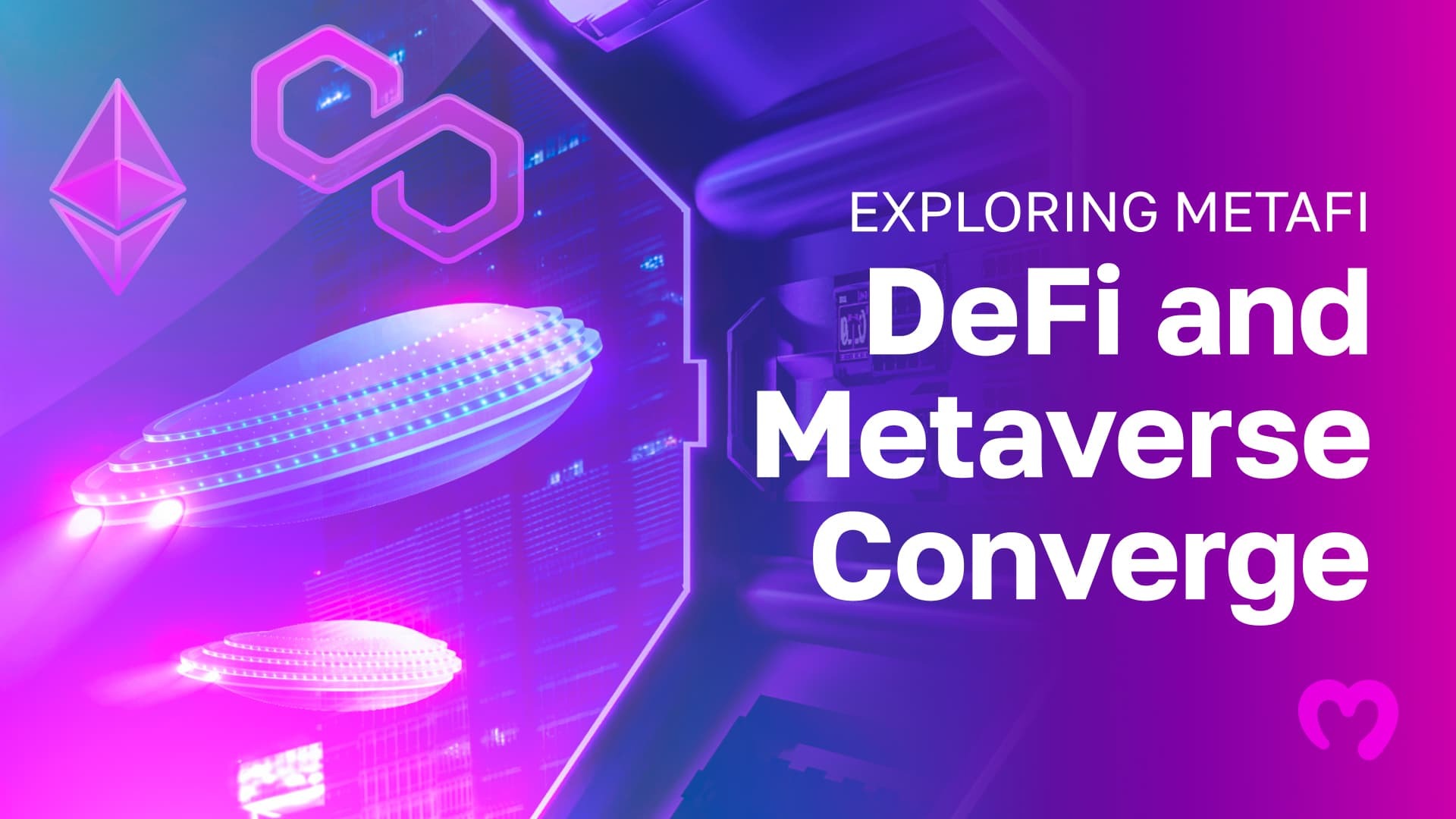Layer-1 blockchains are the foundations of the Web3 ecosystem. However, many of these blockchains are unable to scale on their own. Thankfully, layer-2 networks help to minimize latency and reduce transaction fees by taking computations off the main blockchain. But, layer-2 networks often don’t address the need for blockchain interoperability, and cross-chain communication is essential for the mass adoption of blockchain technology. Moreover, popular decentralized finance (DeFi) protocols offer cross-chain flexibility to enhance user experiences using a layer-3 network, protocol, or application. The term “layer-3 network”, however, is somewhat theoretical. So, if you’re wondering, “what’s the difference between a layer-2 vs layer-3 network, read on!
This “Layer-2 vs Layer-3” article dives deep into the different types of blockchain networks. Further, it explores the differences between a layer-1, layer-2, and layer-3 network. Plus, this article discusses ways to identify the networks that suit your needs.
Layer-1 Blockchains
Before we discuss the difference between a layer-2 vs layer-3 network, let’s look at layer-1 (L1) blockchains. In blockchain, layer-1 is the base layer of the network. For example, Bitcoin, Ethereum, Cardano, and BNB Chain are all L1s. These networks provide the underlying infrastructure for everything else built on top of them and provide a transaction settlement and validation layer for decentralized applications (dapps), smart contracts, and other blockchain layers.
Furthermore, layer-1 networks operate without the need for other networks. They provide security and consensus for applications and layer-2 (L2) networks built on top of them. Plus, layer-1 networks allow developers to build other protocols on top of them without creating a blockchain or native crypto asset.
Problems with Layer-1 Blockchains
One of the most significant issues legacy blockchains face is the ability to scale to meet the growing demands of the Web3 industry. For blockchain to facilitate everyday payments, transactions need to be processed quicker than legacy financial payment providers. Currently, many legacy blockchains are too slow to process transactions to compete with such payment providers on their own. Moreover, some blockchain networks, such as Bitcoin, are slow by design.
Successfully scaling a blockchain entails increasing the number of transactions processed at any time. However, other factors come into play when scaling a blockchain. Increasing transaction throughput can often result in lowering security or decentralization, a problem known as the “blockchain trilemma”. Unfortunately, many blockchain networks must compromise when scaling and accept lower levels of security or decentralization as a trade-off for higher performance.
Another common problem with scaling layer-1 blockchains is that it can take a lot of computational resources. PoW (proof-of-work) mining is notoriously energy intensive. As such, scaling a PoW blockchain could further increase the environmental footprint of the blockchain industry. Many view PoW as the most secure type of mining. However, this is only true when the network is robust and decentralized enough to withstand attacks.
Moreover, when L1 blockchains scale, they risk becoming congested. Transaction speeds become slower, fees increase, and the network’s overall performance reduces. Thankfully, there are several different scaling solutions available to help optimize L1 networks.
Layer-1 Scaling Solutions
When scaling a layer-1 network, developers generally want to increase the number of transactions per second (TPS) that the network can process. One of the ways to achieve this is by increasing the network’s block size, allowing each blockchain to fit more transactions into each block. Likewise, switching to a different consensus mechanism can help a blockchain to scale more efficiently.
Furthermore, some blockchains opt for a sharding mechanism when scaling. Sharding involves partitioning blockchain data into localized groups to increase transaction throughput. Every shard is responsible for a subset of the network activity, each acting as a “city” for different degrees of transaction complexity or applications. This method minimizes the overall fee levels for most of the network and increases performance, as nodes are not required to hold a complete copy of the blockchain. They relay the state of their data to the main chain to validate transactions.
When the community surrounding a layer-1 network disagrees about how a blockchain should scale, it sometimes results in the forking of the underlying codebase. One example is the Bitcoin Cash fork, which occurred during the “block size wars” of 2017, ultimately resulting in division among the Bitcoin community. However, the Bitcoin community successfully pushed through the “segregated witness” (SegWit) update. Further, SegWit enables the Bitcoin network to process more transactions and scale more efficiently by removing digital signatures from transaction inputs.
What is a Layer-2 Scaling Solution?
Sometimes, building on layer-1 is impractical. For example, building a highly performant application on the Bitcoin blockchain would be slow. However, layer-2 scaling solutions address this by taking computations off the main blockchains to reduce congestion and increase throughput. Also, many layer-2 scaling solutions inherit the security of their respective L1 blockchains. As a result, blockchains can scale without compromising on security or decentralization.
As the demand for blockchain and Web3 increases, layer-2 networks play an increasingly prominent role in the efforts to scale major public blockchain networks. For example, as the Ethereum blockchain transitions from proof-of-work (PoW) to proof-of-stake (PoS) to facilitate scaling, it will also use multiple layer-2 networks to minimize congestion. What’s more, layer-2 networks help reduce transaction fees and lower the barrier to entry into Web3.
As the name suggests, layer-2 networks establish secondary frameworks on top of layer-1 blockchains. Although each layer-2 scaling solution works differently from the next, each aims to increase the main chain’s transaction throughput. Below, we look at some of the most prominent layer-2 scaling solutions and how they work.
Bitcoin Lightning Network
Bitcoin Lightning Network is a decentralized layer-2 scaling solution. It sits on top of the Bitcoin blockchain and facilitates high-frequency transactions with minimal fees that settle on the Bitcoin blockchain quickly and with zero counterparty risk. Also, Lightning Network helps to reduce congestion on the Bitcoin blockchain using bi-directional payment channels.
Established by Joseph Poon and Thaddeus Dryja in 2015, Bitcoin Lightning Network aims to address the perceived shortcomings of the Bitcoin blockchain. Specifically, Lightning Network transactions finalize on the Bitcoin blockchain without intermediaries. However, Lightning transactions are significantly faster and cheaper than regular Bitcoin transactions.
Furthermore, regular Bitcoin transactions are irreversible, making them unsuitable for most merchants. Nonetheless, Lightning payments are reversible when used for point-of-sale purchases. As the first interaction of smart contracts on Bitcoin written in the Script programming language, Lightning Network helps to facilitate crypto payments at scale.
Polygon Network
Polygon is an Ethereum layer-2 scaling solution established in 2017. Furthermore, the network benefits from the security and interoperability of the Ethereum blockchain while also benefiting from higher throughput and lower transaction fees. Also, Polygon is among the leading Ethereum layer-2 projects and is home to a thriving ecosystem of developers and decentralized applications (dapps).
The Polygon network uses an implementation of “plasma” to take computations off the main Ethereum chain and enable it to scale. Also, Polygon provides developers with a suite of modular building blocks for creating dapps. As such, developers can get their products to market quickly and with minimal fees.
Optimism
Optimism is another Ethereum layer-2 scaling solution. It uses a technology known as “optimistic rollups” to bundle high volumes of transactions into batches for validation on the main Ethereum chain. Furthermore, Optimism transactions benefit from the security of Ethereum while providing lower fees and faster confirmation times. This is because each batch of transactions only requires a single transaction fee.
There are two prominent implementations of rollups. Zero-knowledge or zk-rollups take computations off the main chain while periodically committing off-chain transaction batches to an on-chain rollup contract for validation. On the other hand, optimistic rollups assume transactions are valid unless they are proven not to be.
Arbitrum
Established by Offchain Labs, Arbitrum is another prominent Ethereum layer-2 scaling solution. Furthermore, Arbitrum has three modes: Arbitrum Rollup, AnyTrust channels, and AnyTrust sidechains. As with other layer-2 solutions, Arbitrum takes computations off the Ethereum blockchain to reduce fees and latency. Moreover, the enterprise-grade scaling solution also makes it easy for developers to create dapps with minimal costs that can scale.
Furthermore, Arbitrum streamlines the smart contract development process. It enables developers to focus more time on user experiences by doing a lot of the legwork for them under the hood. In addition, Arbitrum smart contracts inherit the security of the main Ethereum chain.
Save our “Rust & Solana” article for later reading to learn more about building dapps on Solana using Rust! Additionally, check out our “Crypto Terminology” article to expand your Web3 vocabulary!
What is a Layer-3 Network?
So, now that we’ve covered layer-1 and layer-2 networks, let’s look at how a layer-3 network operates.
The Web3 landscape is constantly evolving. In turn, the demand for cross-chain dapps and interoperable protocols has given rise to a new application layer – the layer-3 network. Moreover, a layer-3 network enhances existing blockchain protocols and enables L1 and L2 networks to interoperate without friction. Also, it helps to knit together the various facets of the blockchain ecosystem and helps them communicate.
Most legacy blockchains do not cater to interoperability by design. However, a layer-3 network facilitates the seamless transfer of data packets between protocols on multiple chains. This application layer consists of various protocols and services that help different chains connect. As a result, the user experiences of cross-chain applications improve.
Layer-2 vs Layer-3
So, what are the differences between layer-2 vs layer-3? Layer-2 solutions generally relieve network congestion by taking computations off the main chain and efficiently relaying them. As a result, layer-2 networks help to minimize transaction fees and latency, which is essential for scaling blockchain networks. However, it does little to improve cross-chain interoperability.
Nonetheless, layer-3 networks exist to facilitate cross-chain communications between multiple protocols. These days, most users of decentralized finance (DeFi) protocols expect some degree of cross-chain compatibility. In addition, cross-chain DeFi (decentralized finance) helps to improve liquidity among lending protocols and creates stability throughout the DeFi ecosystem. The various applications and protocols within the layer-3 network umbrella supplement the vast blockchain ecosystem. Moreover, layer-3 networks could be a driving factor of blockchain technology adoption by providing users with a higher degree of flexibility.
Layer-2 vs Layer-3: What is the Difference? – Summary
Layer-2 (L2) networks help the blockchain industry to scale by taking computations off-chain and minimizing fees and latency. That said, layer-2 networks don’t address the issue of interoperability. Thankfully, layer-3 (L3) networks exist to enable various blockchains and protocols to communicate.
Though the concept of a “layer-3 network” is mainly theoretical, the umbrella term refers to protocols that supplement layer-1 (L1) and layer-2 (L2) networks. In the future, many expect layer-3 networks to play an essential role in connecting the Web3 ecosystem and facilitating the mass adoption of blockchain technology. In addition, the ability of layer-2 networks to reduce congestion and layer-3 networks to facilitate interoperability between protocols enables the interconnectivity the Web3 landscape needs to flourish.
Moralis Academy is the ultimate Web3 and blockchain education suite online. If you want to become a blockchain developer but have no coding experience, check out our JavaScript Programming for Blockchain Developers course. This course teaches students how to build a decentralized exchange (DEX) on Ethereum. However, if you already have some coding experience, why not check out Moralis Workshops? There, you can challenge yourself and use Moralis to build Web3 projects. For example, you can clone popular Web2 applications into decentralized alternatives, including building a Web3 Skyrim market, Sim City Web3, and a Web3 Elden Ring game! Plus, you can build your own DAO, create a Medium clone for blog lovers, or develop an NFT whale-watching app. Furthermore, if you feel like building something from scratch with your current knowledge, follow along and learn how to build your first dapp!
Also, see our “How to Invest During a Crypto Bear Market” and “Understanding Crypto Crashes” articles to learn how to safeguard your crypto assets during market downturns. So, take your first steps towards a life-changing career in Web3 with Moralis Academy!


